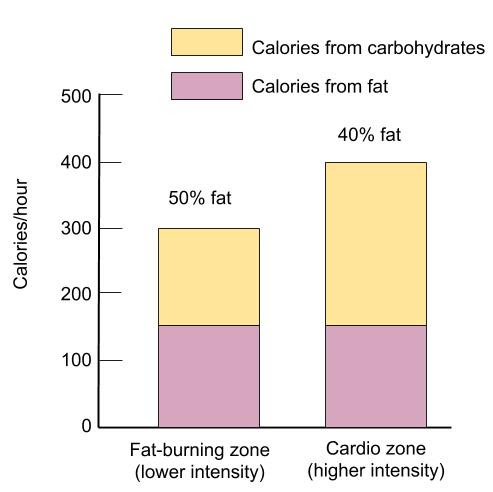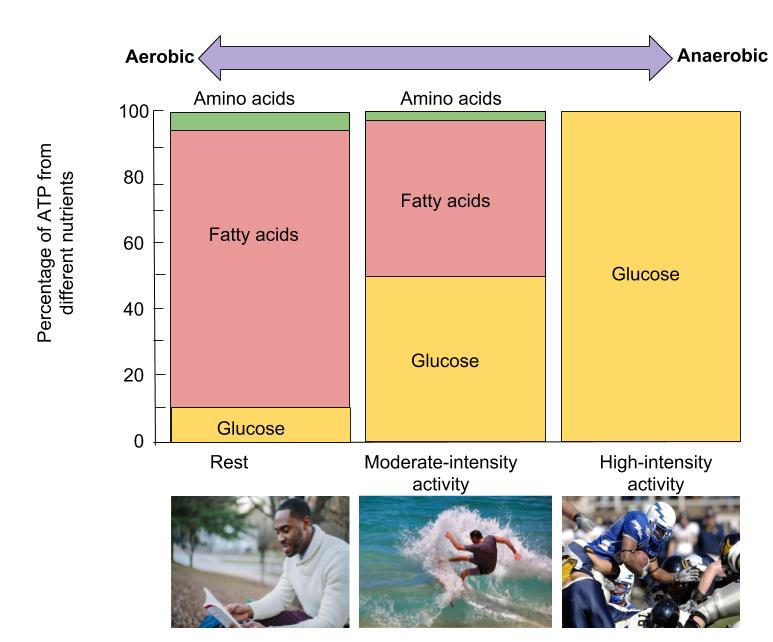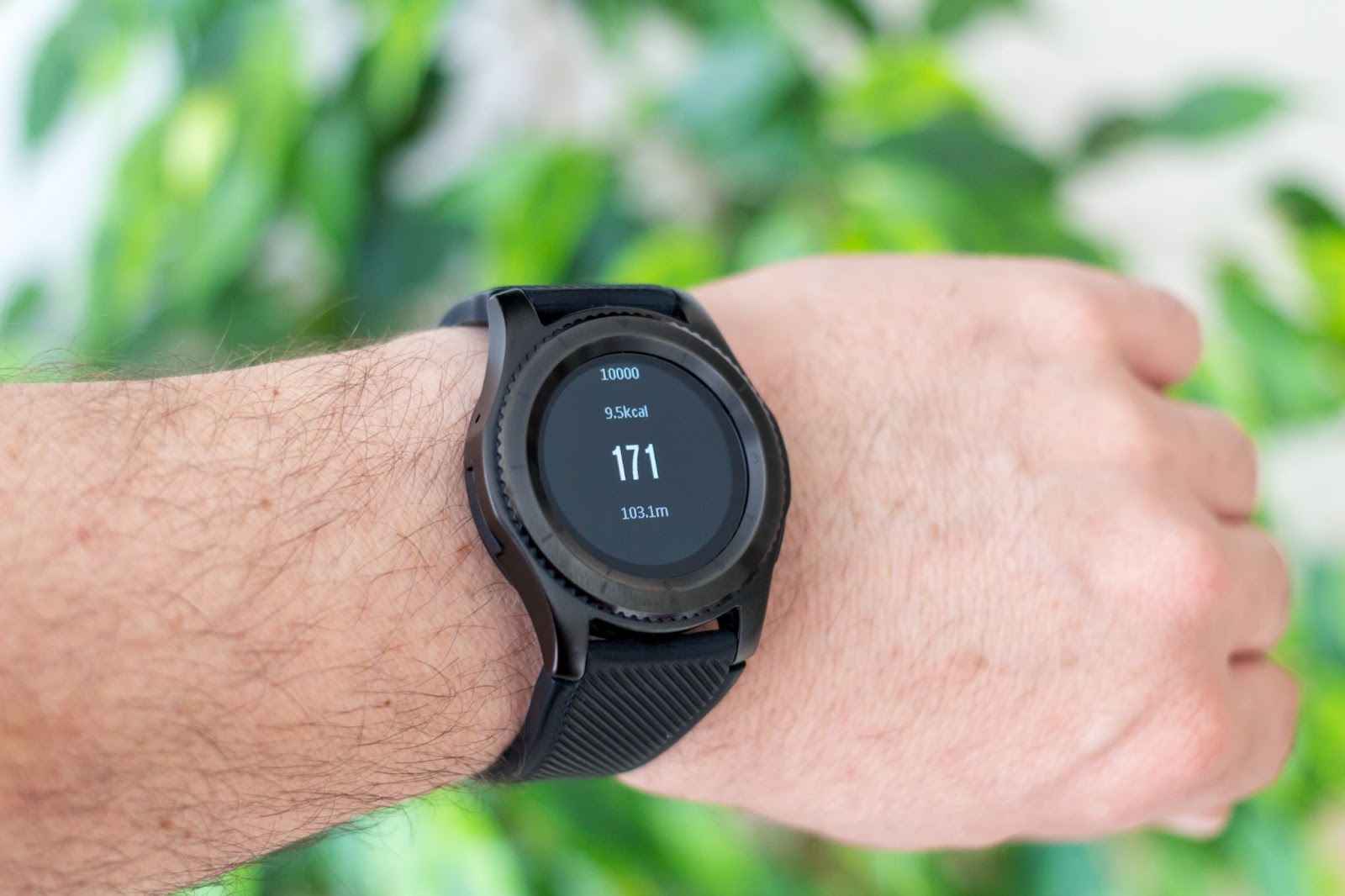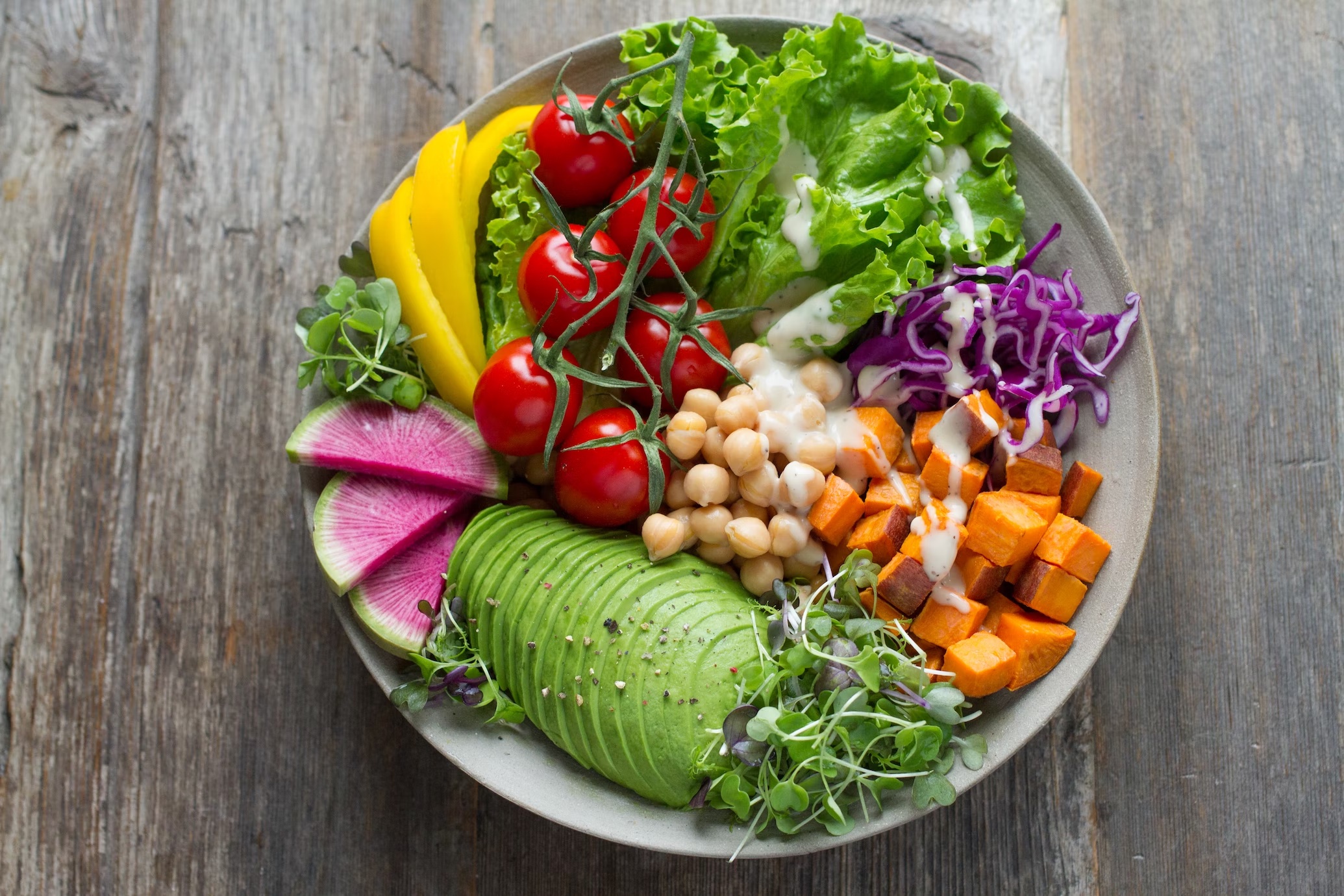In honor of national nutrition month, I want to put to rest a very long-standing myth regarding our body fat, and energy usage during bouts of varying intensity levels during exercise. Now, this is interesting…did you know you are burning predominantly fat right now since you are sedentary reading this? But this is not the best way to burn calories. I hear so often, I don’t want to do HIIT (high intensity interval training) or keep my heart rate up too high because I know I need the “fat-burning zone.” I know you are looking for the best way to burn fat. Or do you ever hear fitness trainers say “ok let’s hit that fat-burning zone!”? It’s akin to them saying “let’s bring the heart rate down to focus only on strength to get that afterburn.” Another cringey example is to see on a cardio machine “fat burning” or “weight loss” program choices. It’s been one of the most common myths promoted by magazines, the news, and social media. The theory is that long, slow, low-intensity aerobic exercise has more benefits for weight loss compared to higher intensities.
If I may, please allow me to jog your memory about life lessons you’ve picked up along the way. When has it ever been true that when you work less vigorously do you get more profound benefits? I can’t think of any…can you?
I’ll explain the science so you can feel fully equipped about how you wish to work out – and hopefully it’s not just about the fat. That would be zero enjoyment and you will condition yourself to associate movement with needing to change your body shape. That sits in a negative space, doesn’t it?
Here are three reasons why the “fat-burning zone” doesn’t actually burn fat:

The fat-burning zone. While a greater percentage of calories burned in lower-intensity exercise come from fat, the overall total calorie burn is greater in higher-intensity exercise.

The effect of exercise intensity on fuel sources. Anaerobic exercise utilizes only glucose for fuel. As activities become more aerobic, the body can utilize fatty acids and, to a small extent, amino acids, for energy production.
1. The fat you want to burn is stored fat; we shouldn’t be concerned with what fuel (carb, fat, or protein-i.e., amino acids) we are using during exercise
The “fat-burning zone” myth is pervasive. There are many misconceptions about when your body uses or “burns” fat the most for energy. It is true that at a low intensity, your body uses more fat for energy than it would at higher intensities. But “fat” here is referring to the type of nutrient, not the extra belly fat you wish to reduce. This “fat burn” applies to sitting, lying down, and sleeping. Sedentary stuff. Therefore, if it were true that low-intensity exercise was optimal for fat loss, then all we would have to do is sleep to lose the weight. This as we know is so not true. Dream on. 😉

2. Heart rate zones are not one size fits all
Not all heart rate zones are created equal. When the chart on the treadmill tells you to aim for a heart rate zone between 120 bpm and 140 bpm, this can be different for everyone. Depending on an individual’s resting heart rate and cardiorespiratory fitness level, 130 bpm can feel like a stroll in the park for one person, but for another can feel like they are pushing with all they’ve got. Choose a heart rate that is at least moderate intensity for YOU (can barely talk but can’t sing, and feels hard to very hard). Also, don’t be afraid to sweat! 😉

3. It’s all about energy balance
When wanting to lose fat, it’s all about the energy balance (energy = calories). Energy balance is calories in versus calories out.
Even though at lower intensities your body may be using fat for energy, exercising at higher intensities burns significantly more calories in HALF the time. For example, sprinters and athletes do not exercise at low intensities but generally have a lower BMI and body fat percentage. Exercise accounts for the “energy out.” “Energy in” is the food you eat throughout the day. It doesn’t matter where your body is burning calories/using energy from, but how many calories you are burning overall. If you are burning more calories than you are consuming, weight loss will typically take place.

HIIT versus steady states: When it comes to getting the most bang for your buck, interval training dominates. It is the most effective way to burn the most calories in the shortest amount of time. Less than half of Americans actually reach the recommended amount of exercise per week (150 minutes), with time rated as the number-one barrier. Want to lose fat, maintain muscle mass, and burn the most calories? Choosing a higher intensity (whether by speed or grade), combined with a lower intensity during the same workout, is better than low-intensity steady-state cardio. You can also cut your exercise session time in half, which makes your time more efficient and offers the same benefits!
Saris and Schrauwen (2004) conducted a study on obese males using a high-intensity interval protocol versus a low-intensity linear one. There was no difference in fat burning between the high and low-intensity treatments at 24 hours. However, the high-intensity group actually burned a higher proportion of fat immediately post-exercise.
In fact, the majority of research indicates that high-intensity interval training (HIIT interval training alternates periods of short near-maximal intensity activity with low to moderate intensity activity) is a superior mode of training for both fat loss and lean mass gain/maintenance. Tremblay and colleagues conducted a study comparing HIIT versus steady state endurance training (constant speed at low to moderate intensity) on young adults over a 20-week period (1994). The HIIT used a progressive program working up to five, 90-second intervals near their max heart rate three times per week. The steady-state endurance group worked up to 45 minutes of exercise five times per week. Although the interval training group only worked out one hour per week compared to 3.75 hours in the steady state group, and expended only half as many calories during the interval workouts, fat loss (as measured by skin folds) was nine times greater in the interval training group. The concepts of EPOC and energy partitioning are relevant to this study and similar studies using high-intensity training.
- What is EPOC you may ask? After exercise, the body continues to need oxygen at a higher rate than before the exercise began. This sustained oxygen consumption is known as excessive post-exercise oxygen consumption (EPOC). During EPOC, the body is restoring itself to its pre-exercise state and thus is consuming oxygen at an elevated rate. This means that energy is also being used at an elevated rate (elevated calorie burning). Current research suggests as exercise intensity increases, the effect of EPOC also increases.
- Energy partitioning: Some exercise scientists point out that the type of calories you burn during exercise has an insignificant impact on weight loss because of a phenomenon called energy partitioning. Energy partitioning indicates that after you complete a low-intensity workout in which you burn mostly fat, your glycogen stores remain relatively full, so few of the calories you eat after your workout for the rest of the day are used to replenish your muscle glycogen stores. Some of the calories may even be involved with creating new storages of fat. However, after finishing a high-intensity workout in which you burn a lot of carbohydrates, your glycogen levels are depleted and many of the calories you consume later in the day will be used to replenish these stores and very few, if any, will be stored as body fat.
- Higher intensity activity generates a significant effect on EPOC, which means a higher metabolic rate (higher number of calories burnt). In addition, higher-intensity activity may provide a positive impact on energy partitioning, which indicates calories eaten after the workout are less likely to be stored as fat. In addition to the factors discussed throughout this article, you always must consider calorie intake as well as calorie expenditure.

Prioritize nutrition:
With all that said, I highly recommend not relying solely on exercise to “burn fat” to get lean. In the context of a fat loss intention, exercise helps you keep your muscle, stay fit, make modest increases to your metabolism, and burn some fat. Because it’s a scientific fact that you must eat less calories than you burn to lose fat, nutrition has more of a powerful impact on this equation. But, both are needed. And it’s not just about the calories. I typically suggest a whole-foods, plant-based predominant eating pattern as much as possible while maintaining or healing the relationship you have with food and your body. Peace first, my friends.

We are human beings first:
If you do not like HIIT, or higher intensity workouts to the point where you won’t exercise because of it, then knock it off or cut back or do your beloved steady state activity. Do the exercise or movement patterns that feel best and bring you some joy, because that is what you will go back to on the reg. THAT is more important than fat loss.
Learn the science and live holistically. We are not machines.
With love,
Miriam Jirari, MPH, RND, CPT, Intuitive Eating Counselor
Studio SWEAT Dietitian
References:
- https://centerforinquiry.org/blog/what-science-says-about-the-fat-burning-zone/
- https://openoregon.pressbooks.pub/nutritionscience/chapter/10b-fuel-sources-exercise/
- University of Hawai‘i at Mānoa Food Science and Human Nutrition Program. (2018). Performance Nutrition. Human Nutrition. http://pressbooks.oer.hawaii.edu/humannutrition/chapter/introduction-11/
- https://www.nsca.com/education/videos/fitness-myth-1–the-fat-burning-zone/










Comments - 0